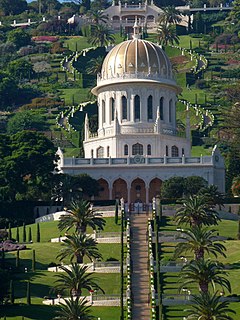 W
WThe roots of the culture of Israel developed long before modern Israel's independence in 1948 and traces back to ancient Israel. It reflects Jewish culture, Jewish history in the diaspora, the ideology of the Zionist movement that developed in the late 19th century, as well as the history and traditions of the Arab Israeli population and ethnic minorities that live in Israel, among them Druze, Circassians, Armenians and others.
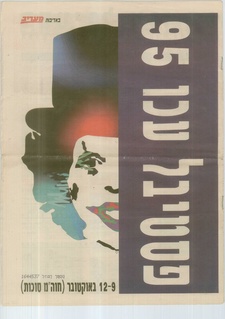 W
WThe Acco Festival of Alternative Israeli Theatre is a four-day performing arts festival held annually in the city of Acre, Israel during the Intermediate Days of the Sukkot holiday in early autumn.
 W
WAdloyada is a humorous procession held in Israel on the Jewish holiday of Purim.
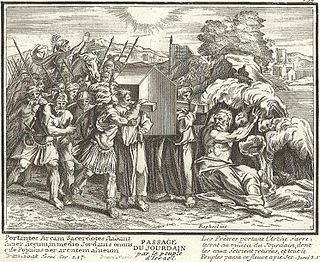 W
WYom HaAliyah, or Aliyah Day, is an Israeli national holiday celebrated annually according to the Jewish calendar on the tenth of the Hebrew month of Nisan to commemorate the Jewish people entering the Land of Israel as written in the Hebrew Bible, which happened on the tenth of the Hebrew month of Nisan. The holiday was also established to acknowledge Aliyah, immigration of Jews to the Jewish state, as a core value of the State of Israel, and honor the ongoing contributions of Olim, Jewish immigrants, to Israeli society. Yom HaAliyah is also observed in Israeli schools on the seventh of the Hebrew month of Cheshvan.
 W
WThe architecture of Israel has been influenced by the different styles of architecture brought in by those who have inhabited the country over time, sometimes modified to suit the local climate and landscape. Byzantine churches, Crusader castles, Islamic madrasas, Templer houses, Arab arches and minarets, Russian Orthodox onion domes, International Style modernist buildings, sculptural concrete Brutalist architecture, and glass-sided skyscrapers all are part of the architecture of Israel.
 W
WBeit Zvi School for the Performing Arts is an acting school located in Ramat Gan, Israel established in 1950.
 W
WThe Bezalel school was an art movement in Palestine in the late Ottoman and British Mandate periods. Named for the Bezalel Art School, predecessor of the Bezalel Academy of Art and Design, it has been described as "a fusion of oriental art and Art Nouveau."
 W
WThe Sylvan Adams Bonei Zion Prize is awarded annually by the Nefesh B'Nefesh organization to formally recognize the achievements of outstanding Anglo immigrants and their contribution to the State of Israel. A Prize is awarded in each of the following categories: "Culture, Art & Sports", Young Leadership, Science an Medicine, Israel Advocacy, Business & Technology, Education, Community & Non-profit, Lifetime Achievement.
 W
WCanaanism was a cultural and ideological movement founded in 1939 that reached its peak in the 1940s among the Jews of Mandatory Palestine. It has had significant effect on the course of Israeli art, literature and spiritual and political thought. Its adherents were called Canaanites. The movement's original name was the Council for the Coalition of Hebrew Youth or less formally, the Young Hebrews; "Canaanism" was originally a pejorative term. It grew out of Revisionist Zionism and according to Ron Kuzar had "its early roots in European extreme right-wing movements, notably Italian fascism". Most of its members were part of the Irgun or Lehi.
 W
WChristianity in Israel is called Natsrut b'Yisrael in Modern Hebrew and al-Masihiat fi 'Iisrayiyl in Arabic.
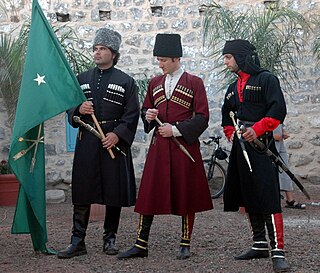 W
WCircassians in Israel refers to the Circassian people who live in Israel. They hail from a Northwest Caucasian ethnic group native to Circassia who mostly adhere to Islam.
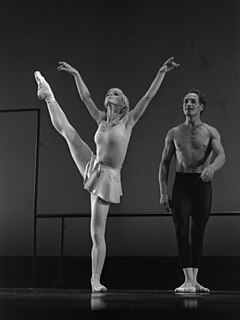 W
WDance in Israel incorporates a wide variety of dance styles, from traditional Israeli folk dancing to ballet, modern dance, ballroom dancing and flamenco.
 W
WThe Doobon coat, also designated the Dubon military cold weather parka, Dubon winter parka, Dubon parka or IDF winter parka is a windproof military winter coat, made with padded nylon cover with cloth lining waterproof outer layer of filling between them isolated synthetic fibers. This coat has a regular hood. This is a coat designed for people who stay outdoors for a long time on cold days, such as soldiers and laborers.
 W
WDror-Israel is a pioneering educational movement whose mission is to effect meaningful, long-term educational and social change in Israeli society in order to promote solidarity, social activism, democracy and equality. Dror-Israel aims to form the grassroots nucleus of an exemplary society in Israel based on the vision of the prophets of Israel and the founders of Zionism.
 W
WThe Encyclopaedia Hebraica is a comprehensive encyclopedia in the Hebrew language that was published in the latter half of the 20th century.
 W
WThe Haifa Theatre is the first municipal theater company of Haifa, Israel.
 W
WHasimta Theater is a fringe theater located in the old city of Jaffa, Israel, and known for being one of the oldest fringe theaters in Israel, as it has been operating continuously since its foundation in 1982 by actor and director Niko Nitai, who had also served as the theater's artistic manager for a while. The theater attracts artists that work in theater and music and seek to examine theatrical form and expression outside the box. The current artistic director and CEO of the theater is Irit Frank.
 W
WHebrew Book Week is an annual week-long event in Israel celebrating Hebrew literature.
 W
WA Hebrew keyboard comes in two different keyboard layouts. Most Hebrew keyboards are bilingual, with Latin characters, usually in a US Qwerty layout. Trilingual keyboard options also exist, with the third script being Arabic or Russian, due to the sizable Arabic- and Russian-speaking populations in Israel.
 W
WThe Israel Ballet is a dance company that performs works of classical ballet and neoclassical ballet. It was founded in 1967 by Berta Yampolsky and Hilel Merkman who have managed it for 45 years. The company often stages newly choreographed works, and in addition, it is the only professional ballet company within Israel that stages works of the classical international repertoire. The Israel Ballet regularly tours internationally.
 W
WThe Israel Cultural Excellence Foundation (IcExcellence) is a private cultural foundation which aims to identify, nurture, and support Israel's most outstanding artists.
 W
WThe Israel Prize is an award bestowed by the State of Israel, and regarded as the state's highest cultural honor.
 W
WIsraeli sculpture designates sculpture produced in the Land of Israel from 1906, the year the "Bezalel School of Arts and Crafts" was established. The process of crystallization of Israeli sculpture was influenced at every stage by international sculpture. In the early period of Israeli sculpture, most of its important sculptors were immigrants to the Land of Israel, and their art was a synthesis of the influence of European sculpture with the way in which the national artistic identity developed in the Land of Israel and later in the State of Israel.
 W
WThe Jerusalem Academy of Music and Dance, is a school for the music and the performing arts in Jerusalem. It is located on the Givat Ram campus of the Hebrew University of Jerusalem.
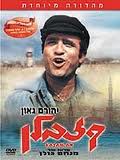 W
WKazablan is an early Israeli Hebrew language play, staged first as a 1954 drama followed by a 1964 screen adaptation, later as a 1966 musical comedy, and still later produced as a 1974 musical comedy film. The name Kazablan comes from Casablanca, the birthplace of the main character.
 W
WA kibbutz is an intentional community in Israel that was traditionally based on agriculture. The first kibbutz, established in 1909, was Degania. Today, farming has been partly supplanted by other economic branches, including industrial plants and high-tech enterprises. Kibbutzim began as utopian communities, a combination of socialism and Zionism. In recent decades, some kibbutzim have been privatized and changes have been made in the communal lifestyle. A member of a kibbutz is called a kibbutznik.
 W
WThe Maccabiah Games, first held in 1932, are an international Jewish and Israeli multi-sport event now held quadrennially in Israel. It is the third-largest sporting event in the world, with 10,000 athletes competing. The Maccabiah Games were declared a "Regional Sports Event" by, and under the auspices and supervision of, the International Olympic Committee in 1961.
 W
WMatkot is a popular Padel ball game in Israel similar to beach tennis, often referred to by Israelis as their national beach sport.
 W
WMotek Cultural Initiative was established in 2011 in Toronto, Ontario, Canada in order to showcase Israeli music. Its programs include annual galas, concerts, music festivals, workshops, lectures, advocacy events, and Q&A sessions. Motek is Hebrew slang for "Sweetheart". Like "Mon Cheri", and "Habibi" it is a gender-neutral term of endearment.
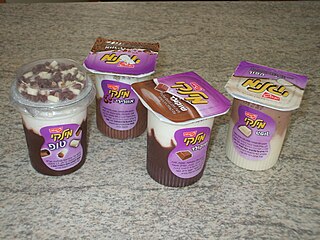 W
WOlim L'Berlin was the name of a Facebook page that coined a snowclone in 2014, and was terminated in early 2015. Comparing the high cost of living in Israel with the comparatively cheaper economic climate in Berlin, which has a growing community of Israeli expatriates, the page urged more Israelis to move to Germany, raising a storm of protest in Israeli social and political circles. Compounding the reaction was the Facebook page's use of the same verb (olim) that Jews use for aliyah.
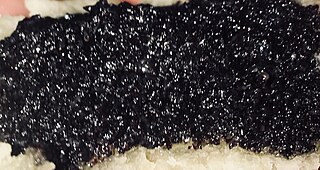 W
WPoppy seed paste, also known as mohn is a common ingredient in Jewish pastries and desserts, and is made from ground poppy seeds and additional sweeteners. Examples of pastries featuring the filling include mohn kichel, babka, and, most famously, hamantashen. In Jewish cuisine, the filling is traditionally referred to as mohn, the word for poppy in both Yiddish as well as German. Poppy seed-filled pastries are particularly associated with the holiday of Purim
 W
WPsuko Shel Yom was an Israeli daily midnight minutes-long program-segment aired on the public Channel 1, reciting selected daily biblical, Midrash or Aggadah verses.
 W
WRabbinic authority in Judaism relates to the theological and communal authority attributed to rabbis and their pronouncements in matters of Jewish law. The extent of rabbinic authority differs by various Jewish groups and denominations throughout history. The origins of rabbinic authority in Judaism is understood as originally linked to the High Court of ancient Israel and Judah, known as the Sanhedrin. Scholars understand that the extent of rabbinic authority, historically, would have related to areas of Jewish civil, criminal, and ritual law, while rabbinic positions that relate to non-legal matters, such as Jewish philosophy would have been viewed as non-binding. Rabbinic authority also distinguished the practice of Judaism by the Pharisees to the religious practice of the Sadducees and the Qumran sect. This concept is linked with the acceptance of rabbinic law, which separates Judaism from other offshoot religions such as Samaritanism and Karaite Judaism. In contemporary Orthodox Judaism, the concept is sometimes referred to as da'as Torah, and the notion of rabbinic authority in this context is often extended beyond the confines of Jewish law, but to a variety of personal, social and political matters.
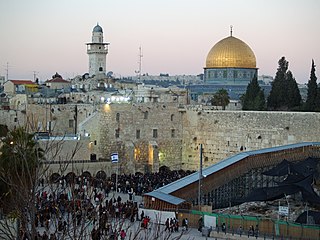 W
WReligion in Israel is manifested primarily in Judaism, the ethnic religion of the Jewish people. The State of Israel declares itself as a "Jewish and democratic state" and is the only country in the world with a Jewish-majority population. Other faiths in the country include Islam, Christianity and the religion of the Druze people. Religion plays a central role in national and civil life, and almost all Israeli citizens are automatically registered as members of the state's 14 official religious communities, which exercise control over several matters of personal status, especially marriage. These recognized communities are Orthodox Judaism, Islam, the Druze faith, the Roman, Armenian Catholic, Maronite, Greek Catholic, Syriac Catholic, Chaldean, Greek Orthodox, Syriac Orthodox, Armenian Apostolic and Anglican churches, and the Baháʼí Faith.
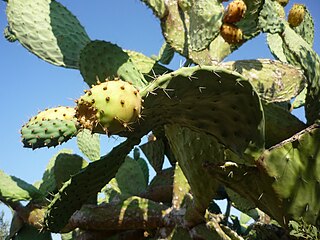 W
WA sabra or tzabar is an informal-turned-formal term that defines any Jew born in Israel. The term came into widespread use in the 1930s to refer to a Jew who had been born in Palestine, though it may have appeared earlier. Since the establishment of the State of Israel in 1948, Israelis have used the word to refer to a Jewish person born anywhere in the Land of Israel.
 W
WShtisel is an Israeli television drama series about a fictional Haredi family living in Geula, Jerusalem. Created and written by Ori Elon and Yehonatan Indursky, the series premiered on 29 June 2013 on yes Oh. It commenced distribution via the online streaming service Netflix in 2018. The first two seasons have 12 episodes per season, and the third season has 9 episodes.
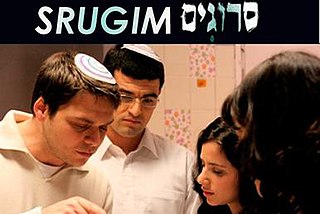 W
WSrugim is an Israeli television drama which originally aired on Yes TV between 2008 and 2012. It was directed by Eliezer "Laizy" Shapiro, who co-created it with Havvah Deevon. The series depicted the lives of five religious Zionist single men and women, in their 30s, who reside in Jerusalem. The title is a reference to the crocheted skullcaps worn by men of that segment of Israeli society. Srugim, which dealt with controversial issues in the Religious Zionist society in Israel, caused a public uproar within that sector.
 W
WSrulik is a cartoon character symbolizing Israel. The character was created in 1956 by the Israeli cartoonist Kariel Gardosh, known by his pen name Dosh.
 W
WA tembel hat is a hat which is an Israeli national symbol. The tembel hat was commonly worn by Jews in Israel from the beginning of the 20th century until the 1970s and was a symbol of hard-working, Zionist Israelis. In Israeli cartoons it is still used to symbolize the typical Israeli. Tembel hats were most notably produced by the ATA textile company.
 W
WA Touch Away is a 2006 Israeli drama television miniseries set in Bnei Brak, a city to the east of Tel Aviv, within the larger Tel Aviv District, in Israel. It has been described as a kind of Romeo and Juliet story, focusing on the relationship of a young secular Jewish immigrant from Russia who falls in love with a young woman who is part of the city's ultra-orthodox community. Using this relationship as the basis for the story, the series explores the lives of new immigrants, non-religious, and religious Jews in Israel.
 W
WUm-Shmum is a phrase coined by the Israeli Minister of Defense David Ben-Gurion on March 29, 1955 during a cabinet debate regarding his plan to take the Gaza Strip from Egypt in response to the increasing fedayeen terror attacks on Israel.
 W
WVisual arts in Israel refers to plastic art created in the Land of Israel/Palestine region, from the later part of the 19th century until today, or art created by Israeli artists. Visual art in Israel encompasses a wide spectrum of techniques, styles and themes reflecting a dialogue with Jewish art throughout the ages and attempts to formulate a national identity.
 W
WA youth village is a boarding school model first developed in Mandatory Palestine in the 1930s to care for groups of children and teenagers fleeing the Nazis. Henrietta Szold and Recha Freier were the pioneers in this sphere, known as youth aliyah, creating an educational facility that was a cross between a European boarding school and a kibbutz.